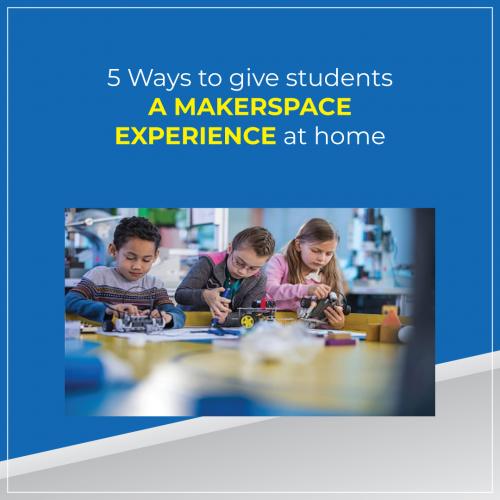5 Ways to Give Students a Makerspace Experience at Home

The pandemic hit everyone hard last
year and still, it’s a big threat, it made public places and schools shut down,
schools had losses in terms of students and students had losses in terms of education.
Still, they got a fair chance in the
form of online classes, but they were not much enjoyable, especially for
younger students, they need something that is more fun and more practical and
even if they did enjoy online classes, they would get bored after that, even if
they played games on phones, for how long will the virtual world keep them
engaged?
The solution is to give pupils a
makerspace at home. This article focuses on 5 ways, how teachers can give their
students a makerspace at home.
How to offer hands-on projects
remotely?
It’s their choice: - The key is to have student-centric
learning designs as they always feature student choice. Because of choice they
always get focused freedom, this gives them a sense of control when needed. Due
to this positive results are achieved much easier.
It’s not possible to handle the
obstacles in each pupil’s house with a perfect plan. But by an open-ended
experience, they get more space to move around plus an added benefit of giving
them choice is that they can independently explore multiple approaches to a
single task, and their ability to perceive also improves.
To give the reader an example, a
school taught its grade 3 students laws of motion when their teacher asked them
to make a mini-golf course by whatever they had; those who didn’t have the
materials were given simulation software. Thus everyone learned in meaningful
ways that were accessible to them.
Make it easily accessible: - Teachers should be aware of the
materials that they are requesting. They must avoid asking for expensive and or
unusual materials. This will ensure that the project can be easily accessed by
every student.
Remember that there are poor or
middle-class students as well, every rupee spent is counted by them and they
avoid extra trips out of the home for safety purposes, a teacher must make sure
to not be the villain by asking for things that are not available in their
home.
This is the exact time to use
recyclable articles. Students should be able to construct things that are easy
to deconstruct without the trouble of finding the materials ruined afterward.
Take this example of the same school
in point number 1 where they asked the students to tie a string to any soft
item, the students were able to demonstrate centripetal force by flinging the
object around in a circle, even when they separated the object and the string
the materials were intact.
Offer to pick up materials: - Many areas have a policy for
materials to weekly get them picked up or when parents or families need this done,
often this is done with pick up of free meals.
Consider this very important with
materials that can be hazardous if consumed such as plastic things, teachers
must include instructions to carefully handle such materials.
Family participation: - Not all parents are experts in
science, technology, engineering, and mathematics, but they can always have fun
with their children sharing their knowledge with them, they can encourage them,
cheer them and even help where they can.
Schools and teachers can allow the
projects to be completed with help from family members; this can be extremely
helpful in smaller grades as younger children can’t do everything on their own
no matter how exposed to real-life situations they are.
For example, students of grade2 from
a school made mini shelters for pilgrims with recyclables around the time of
thanksgiving. They had a lot of fun with their family; testing the strength of
their product with wind from hair dryers or against snow made from cotton etc.
Iterative learning necessary: - It is one of the most important parts
of makerspace learning and yet it’s the one that’s missing in the current
scenario.
There should be opportunities for
students to start something, test out what they made, make changes and test
again, students will make mistakes and will surely be upset with them. It’s
important to teach them how to learn from their mistakes like it’s said
rightfully in the lion king “the past can hurt, but the way I see it is either
you can run from it or learn from it”.
What teachers can do is that they can
design a flexible project where they ask the students to note down the changes
they made, they can either report one thing they fixed, one thing that worked
well from the start, and one thing that they completely messed up or a final
report where they have to show their thought process. Overall the students must
be encouraged to keep going, instead of scolding when they make a mistake.
Post Your Ad Here
Comments